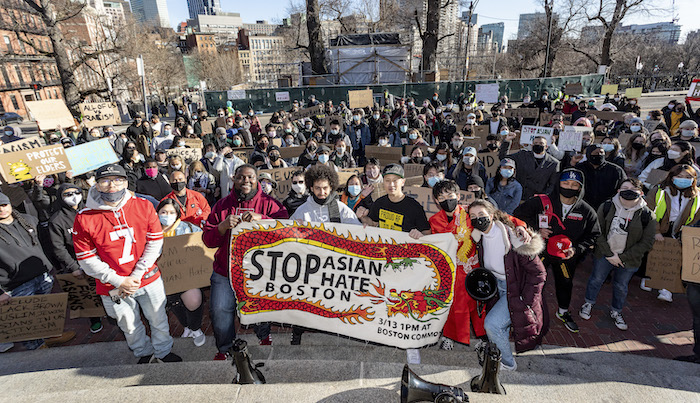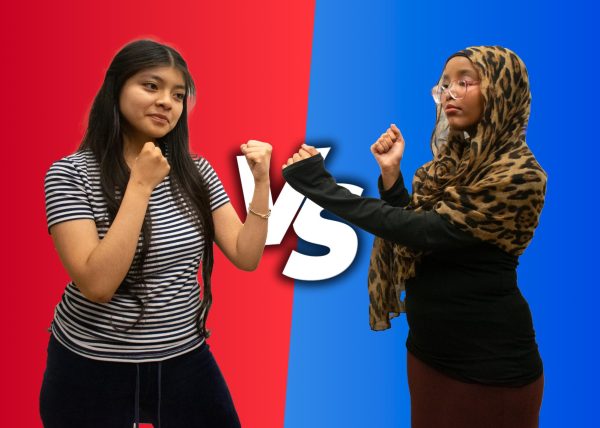A Surge in Anti-Asian Hate: How Did We Get Here?
March 13, 2021, Boston Common, Boston, Massachusetts, USA: Protesters rally to protest discrimination and crimes against Asian and Pacific islanders during the Stop Asian Hate rally.
Vicha Ratanapakdee. Xiaojie Tan. Christian Hall. These are just a few of the many victims of the recent spike in violence towards Asian Americans and Pacific Islanders (AAPI). If you can recognize their names, how familiar are the names Vincent Chin, Fermin Tobera and Chee Lee Tong?
They were all victims of anti-AAPI hate crimes in the past. In fact, discrimination towards the AAPI community has a long history in the United States. These issues, in both the past and present, are overlooked, as society has treated hate crimes as individual acts of hate rather than part of a systemic problem. To reverse this trend, the public should diversify the current education and narratives around anti-AAPI hate.
History plays a significant role in the discrimination against AAPI today. As a result, it is critical to understand this history before any long-term solutions can be enacted. While former President Donald Trump’s decision to call COVID-19 the “Chinese Virus” or “Kung Flu” was a catalyst for the recent crimes, “these hate crimes never started [solely] because of COVID-19 and learning about the history of racism against Asian Americans would give a clearer idea on the motives of some of these violent attacks,” explains Angela Guan (III).
In the 19th century, racists coined the term “Yellow Peril” to target Asians who they believed to be invading the U.S., stealing the jobs of “real Americans” and inciting the destruction of U.S. institutions. This enabled the antagonization of Asian Americans during the next century, especially through the “perpetual foreigner” myth, in which Asian Americans are first and often only seen as being foreigners.
The alienation made it easier to mistreat AAPI since they were dehumanized and seen as a common enemy. The result was the initiation and acceptance of the scapegoating of China for COVID-19, the creation of Japanese internment camps during World War II and numerous other incidents of discrimination that have only reinforced the idea of the “perpetual foreigner.”
The matter does not end there. It is incredibly difficult for AAPI to deal with and fight the consequences of being “foreign” because of systemic impediments, such as language barriers. Trisha Obsequio (I), an officer of BLS Asian Students in Action, corroborates, “In BLS, many Asian parents are left out of important conversations surrounding school decisions and updates because there is minimal translation capacity,” while on the national level, “from accessing emergency funding for local businesses to filing for unemployment benefits, there was little to no assistance for the Asian community in translating and deciphering all of these documents.” Without understanding the multitude of issues that AAPI faces, constructive change cannot be made to adequately address the situation.
Not only are the problems multifaceted, but so are the ways that they impact different AAPI communities. Society has forced a singular identity upon all Asian Americans, despite the incredibly diverse cultures and nationalities. This is known as the Asian monolith. The monolithic view of every community under the AAPI umbrella makes it easier for institutions to disregard the needs of certain groups by claiming the success of some Asian groups as representative of all Asian Americans.
Assistant Head of School Mr. Steven Chen furthers that “It’s important to disaggregate different Asian populations because there is a lot of nuance there, and if you just say Asian students are doing well […] what you’re ignoring is whether that is true for all Asian students or are there students who need additional support that we haven’t identified because we haven’t been asking the right questions.” Although we need to stay unified when fighting against anti-AAPI hate, we cannot maintain the monolith when discussing solutions.
While it is monumental that attention is being brought to anti-AAPI hate, society must also be willing to learn about issues that are not necessarily hate crimes and give them the attention they need. Discrimination against AAPI is embedded in the history and institutions of the U.S. If we do not address the systemic roots, it would be like treating a patient with cancer as if they only had bruises.







